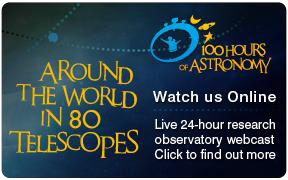Carnival of Space
Submitted by chandra on Mon, 2009-05-18 14:32Many of this week's blogs focused on that little-known telescope that's being invaded by a spaceship. In case you missed it, the telescope is called "Hubble" and the spaceship is our Space Shuttle Atlantis. Naturally, the astro-blogosphere took notice. In his "Dynamic of Cats" blog, Steinn Sigurdsson talks about the last pretty picture to come out of that workhorse instrument with the stubborn screw -- Wide Field/Planetary Camera 2.




